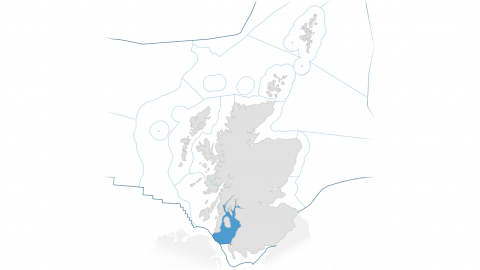The tables in this section reflect the output of the workshop (October 2019) when the pressures from human activities were assessed for the period 2014 to 2018 for the region. The summary text below the tables elaborates on some of the points that were made at the workshop.
This pressure assessment uses the FeAST classification which includes two abrasion pressures: surface abrasion & sub-surface abrasion. Some expert groups combined these as a single pressure "surface & sub-surface abrasion" whilst others focussed on using surface abrasion alone, hence there is a slight difference in handling for some regions.
The ranking of the pressures in terms of impact is a relative exercise within each region, and is not a statement of their absolute impact. Detailed comparison between regions on the basis of these relative pressure assessments is therefore not advisable.

Main pressures identified
| Priority [1] | Pressure (FeAST classification) [2] | Main healthy and biologically diverse components affected [3] | Main contributing FeAST activity /activities to pressure [4] | Associated productive assessments [5] |
|---|---|---|---|---|
| 1 | Removal of target species (including lethal) |
|
||
| 2 | Surface abrasion |
|
||
| 3 | Removal of non-target species (including lethal) |
|
||
| 4 | Underwater noise |
|
||
| 5 | Hydrocarbon & PAH contamination. (Includes those priority substances listed in Annex II of Directive 2008/105/EC). |
|
Other pressures identified
Footnote: the ordering of entries is alphabetical and there is no prioritisation between the pressures.
Summary from workshop
The Clyde region covers a diverse range of terrestrially modified marine system types: from brackish riverine to sea-lochs to coastal marine ecosystems of the outer Clyde Sea. The area is not directly inundated by pure oceanic waters. Although collision risk is not identified in the top five pressures for the Clyde, there exists lots of uncertainty in terms of how often this occurs. Mainly driven by extensive yachting and shipping activity in this region. Basking sharks are regularly observed in the outer Clyde Sea. Numerous seal haul out sites exist, small cetaceans (porpoises/dolphins) are regularly observed. Pressures associated with military and large commercial vessel activity appear through underwater noise pressure in the assessment, i.e. their contribution to collision risk is deemed a lesser pressure than their contribution to underwater noise.
Dredging in the upper Clyde has occurred for some time, so changes to seabed type, tidal flow, and direct change in habitat type are already well established. Dredging is localised in the upper Clyde and relatively easily avoided by mobile species, and noise is biased to low frequencies that are unlikely to cause damage to auditory systems.
As noted, the inner Clyde estuary and Clyde Sea are very distinct regimes – as are the sea lochs. Pressures related to waste disposal are likely to be significantly more important in inner Clyde Estuary.
In identifying the top five pressures for the whole Clyde region the following activities were considered to be important.
1 Removal of target species (lethal): all species involved in recreational angling have been assumed to be ‘target’ species rather than ‘non-target’ bycatch. This activity is likely to be (mainly, though not exclusively) concentrated in inshore waters; scallop dredging; bottom otter trawling and pair trawls; creeling and potting; dive fisheries; line fishing (hand and mechanised longlining); recreational fishing; scallop dredging.
2 Surface abrasion: bottom otter trawling and pair trawls; creeling and potting; line fishing (hand and mechanised longlining); Scallop dredging.
3 Removal of non-target species: mainly linked to impacts of bottom otter trawling and pair trawls; recreational fishing; scallop dredging; intertidal fishing e.g. bait digging; creeling and potting.
4 Underwater noise: driven by small boat activity, military and large commercial vessel activity. Military sonars can be active in this region. Small boat noise footprint expected to be relatively local (small engines create higher-frequency sounds which get attenuated quicker) but more widespread wherever significant numbers of large vessel movements occur. Impacts on other marine receptors (fish, invertebrates) largely unknown due to lack of scientific data.
5 Hydrocarbon & PAH contamination.

